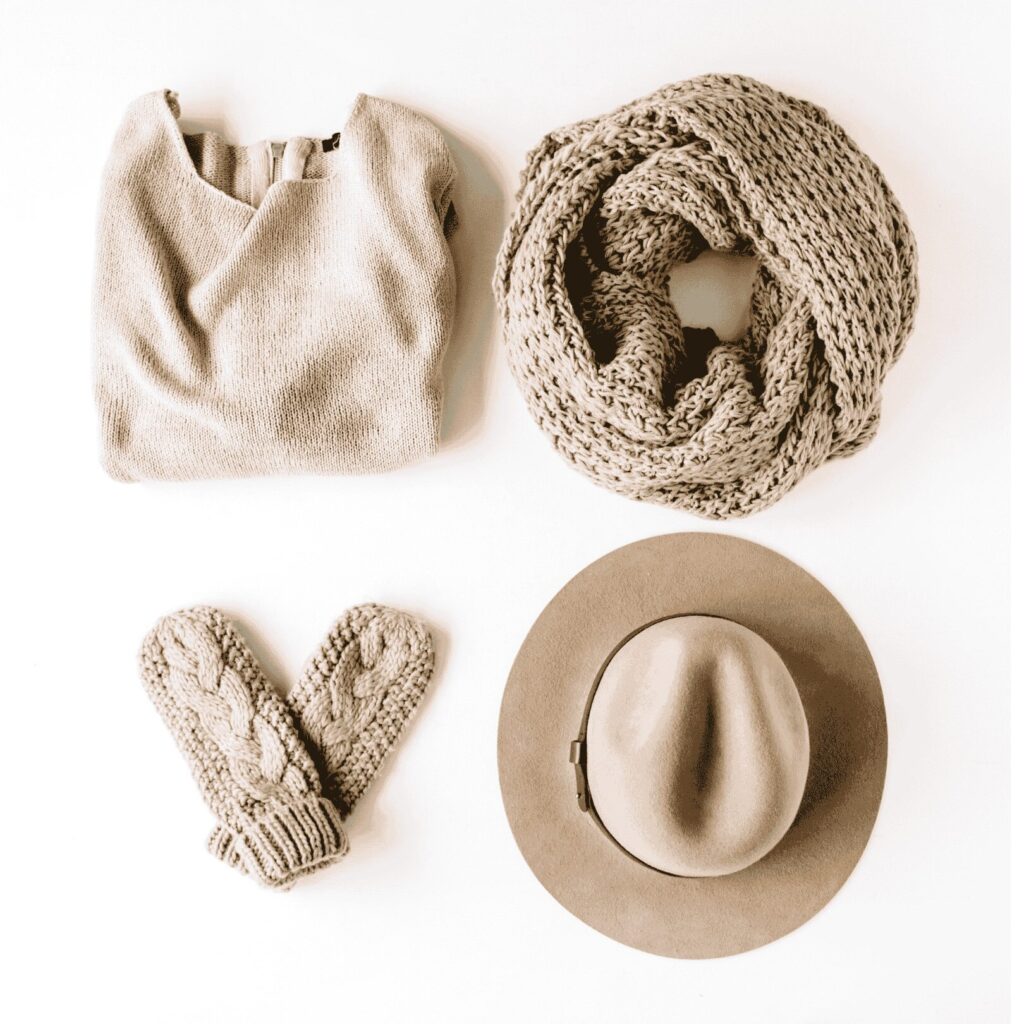What to wear could be a concern for someone planning a trip to Ireland. Ireland is renowned for its breathtaking landscapes, history, Myths & legends. As the weather is unpredictable, making appropriate clothing is essential for a comfortable and enjoyable experience.
In this article, I have done all the research for you about the appropriate packing list for Ireland wear and appearance.
Table of Contents
What to Wear in Ireland for Every Season
Summer in Ireland: What to Expect
Summer in Ireland (June to August) is mild and comfortable, with temperatures ranging from 15°C to 20°C (59°F to 68°F). You might catch a few sunny days, but rain is still common, so it’s essential to be prepared.
- Lightweight t-shirts or tops for warmer days
- A light sweater or long-sleeved shirt for cooler evenings
- Comfortable jeans or trousers
- A lightweight, waterproof jacket
- Sunglasses and a hat (just in case the sun decides to show up!)

Summer is the best time to visit Ireland as you get comparatively good weather and extended daylight. You can take advantage of the warmest months of the year and longer daylight hours(nearly 20 hours) for the best sightseeing. It is perfect for outdoor activities like hiking, Exploring Castles, and Discovering numerous myths& legends.
Winter Essentials: Staying Warm and Dry
In Ireland, Winter (December to February) can be cold and damp, but it rarely gets below freezing. Expect temperatures between 0°C and 8°C (32°F to 46°F). Wind and rain are common, so staying warm and dry is your top priority.

- A heavy waterproof coat
- Wool sweaters or fleece tops for warmth
- Thermal layers if you’re sensitive to cold
- A warm hat, scarf, and gloves
- Waterproof boots to keep your feet dry
- Wool socks for extra warmth
Even if it’s not snowing, the wind can feel freezing, especially near the coast or the countryside. Layering is your best friend during winter in Ireland.
Extra Tip: January and February are the coldest month in Ireland. So, if you’re sensitive to colds, try to avoid these two months.
Spring and Fall: Layering for Variable Weather
Spring (March to May) and Fall (September to November) are transition periods in Ireland, and the weather can be quite unpredictable. It’s not unusual to experience sunshine, rain, and wind all in the same day.
When it comes to spring in Ireland, you can expect milder temperatures, a mix of sunshine and showers, and nature slowly coming back to life. The air feels fresh, and while it’s not as rainy as in autumn, you’ll still need a light waterproof jacket handy for those unpredictable showers.
Compared to winter, spring feels much warmer, but you’ll still want to layer up with light sweaters and jackets, especially in the mornings and evenings when it can still be a bit chilly. As the days get longer, you’ll notice flowers blooming everywhere, from vibrant daffodils to colorful wildflowers lining the countryside.

When it comes to autumn (fall), you can expect strong winds, plenty of rain, and mild temperatures. Compared to the winter season, it doesn’t get too cold, but you’ll still need wool sweaters and cardigans. Throughout autumn, the days gradually get shorter.
In my opinion, Ireland looks stunning in autumn, with shades of orange, gold, and red leaves mixed with the natural green of fields and hills, creating breathtaking scenery. For hiking and walking tours, this season is ideal. I love this time of year because it’s neither too hot nor too cold, and the country is at its peak beauty.
What to pack:
- Light layers that you can easily add or remove
- A medium-weight jacket or hoodie
- Long-sleeved tops
- light sweaters
- Waterproof shoes or boots
- A compact umbrella or a small waterproof jacket
A Month-by-Month Guide for Your Packing
As you’ve read above, Ireland experiences four main seasons, each with its own unique weather patterns. From December to February, it’s winter. From March to May, it’s spring. June, July, and August are summer, and the rest (September, October, and November) make up autumn.
I’ve already given you an overview of what to wear in each season, but if you’re looking for specific packing tips for each month, you’re in the right place. Below, you’ll find a quick guide on what to pack for each month of the year to help you stay comfortable and prepared no matter when you visit!
What to wear in January
January is one of the coldest months in Ireland, with temperatures often hovering around 0°C to 8°C (32°F to 46°F). Expect frequent rain and occasional frost, especially in the countryside.

What to pack:
- Warm winter coat – A thick, insulated coat is a must.
- Wool sweaters – Essential for layering and keeping warm.
- Thermal base layers – A good idea for extra warmth.
- Waterproof boots – The ground can be wet and slippery.
- Gloves, scarves, and hats – Keep the cold wind at bay.
What to wear in February
February continues to be cold, but there’s a hint of spring on the horizon. Rain and chilly winds are still prevalent.
- Medium-weight coat with layers – Not as heavy as in January, but still warm.
- Water-resistant boots – Perfect for city and country walks.
- Long-sleeve shirts and wool sweaters – Comfortable and versatile for layering.
- Beanie and gloves – For those cold, windy days.
What to wear in March
March marks the start of spring, but the weather can be unpredictable. Sunny spells can quickly turn into showers.
- Lightweight jacket – Bring one that’s waterproof and windproof.
- Layered clothing – T-shirts or long-sleeved shirts with a cardigan or light sweater.
- Comfortable walking shoes – Ideal for exploring the countryside or cities.
- Scarf – A lighter one for breezy days.
What to wear in April
April is known for sudden rain showers, so be prepared with waterproof gear. The temperature starts to rise, but it’s still cool.
- Waterproof jacket – A must for the unpredictable rain.
- Comfortable jeans or trousers – Great for both casual wear and walking.
- A light sweater or hoodie – For chilly mornings and evenings.
- Compact umbrella – Easy to carry for those surprise showers.
What to wear in May
May brings milder weather, with temperatures ranging from 8°C to 15°C (46°F to 59°F). It’s a great month for outdoor activities.
- Light layers – T-shirts, long-sleeve tops, and a light jacket.
- Comfortable walking shoes – Perfect for hiking or walking tours.
- Sunglasses – The sun starts to show more often.
- Rain jacket – It’s still Ireland, so occasional rain is likely.
What to wear in June
June is the beginning of summer, but the weather remains mild, with occasional rain. Expect temperatures between 12°C and 18°C (54°F to 64°F).
- T-shirts and light sweaters – Ideal for warm afternoons and cooler evenings.
- Light waterproof jacket – Still needed for the occasional rain shower.
- Comfortable sneakers – Great for walking around cities or exploring the countryside.
- Hat and sunglasses – For those rare, sunny days.
What to wear in July
July is one of the warmest months, but the temperatures are still moderate. Expect highs of around 19°C to 20°C (66°F to 68°F), with longer daylight hours.
- Light t-shirts and shorts – Great for warmer afternoons.
- Light sweater or hoodie – For cooler mornings or evenings.
- Lightweight, breathable rain jacket – A must-have, as rain showers can still occur.
- Comfortable walking shoes – Perfect for outdoor adventures.
What to wear in August
August is similar to July but with slightly more rain. Temperatures remain mild, so dressing in light layers is the way to go.
- Short-sleeve shirts or dresses – Great for warmer, sunny days.
- Light jacket or sweater – Perfect for layering.
- Waterproof shoes or sandals – Versatile for exploring in both wet and dry weather.
- Hat or cap – For protection from the summer sun.
What to wear in September
September brings cooler days and signals the start of autumn. Temperatures range between 10°C and 16°C (50°F to 61°F).
- Light to medium-weight jacket – Great for cooler mornings and evenings.
- Layered clothing – T-shirts with a light sweater or long-sleeve tops.
- Ankle boots or comfortable shoes – Ideal for both city walks and countryside adventures.
- A scarf – Perfect for the occasional windy day.
What to wear in October
October can be quite chilly, with frequent rain and wind, as autumn settles in. Temperatures drop to around 8°C to 14°C (46°F to 57°F).
- Medium-weight coat – Warm enough for chilly days.
- Long-sleeve tops and sweaters – Perfect for layering.
- Waterproof shoes or boots – Essential as the ground gets wetter.
- Windproof jacket – Helpful for breezy days, especially along the coast.
What to wear in November
November marks the arrival of colder temperatures and more rain. It’s a good idea to start dressing for winter conditions.
- Heavy coat or parka – To keep you warm and dry.
- Wool sweaters – A great option for layering under your coat.
- Waterproof boots – A must for the wet and cold conditions.
- Warm accessories – Gloves, scarves, and hats to protect you from the cold wind.
What to wear in December
December is fully into winter, with temperatures often dipping below 5°C (41°F) and frequent rain or wind.
- Thick winter coat with hood – A waterproof and insulated coat is perfect for staying dry and warm.
- Thermal layers – For added warmth, especially if you’ll be outside a lot.
- Waterproof boots with good grip – Keep your feet dry and warm on wet, icy days.
- Woolen hat, gloves, and scarf – Essential for combating the cold winds.
I gather as much information as I can to ease your journey to Ireland. I hope by following this guide, you’ll be well-prepared to enjoy everything Ireland has to offer, no matter the season or weather. Happy travels!
What should I wear in Ireland?
When planning your trip to Ireland, it’s essential to consider the unpredictable weather in Ireland. You’ll want to focus on a layering system that allows you to stay comfortable. A typical outfit might include a base layer, a warm sweater, and a waterproof jacket or raincoat. Don’t forget a good pair of walking shoes or sneakers as you’ll likely be exploring a lot on foot.
What are the essential items for my Ireland packing list?
Your Ireland packing guide should include a few essential items: a reliable waterproof jacket, a warm fleece, comfortable trousers, and a good pair of sturdy walking shoes. Additionally, consider packing a compact umbrella and wool socks to keep your feet warm and dry. Don’t forget to include a backpack for day trips to carry your essentials.
How do I pack for Ireland efficiently?
To pack for your trip to Ireland efficiently, use packing cubes to organize your clothing by type. Start with your outer layer like a waterproof jacket, followed by base layers and fleece for warmth. Remember to check the average temperatures for the time of year you are visiting, as this will help you decide how many layers to bring. It’s always best to pack light while ensuring you have a versatile selection of clothing.
What should I consider when deciding what to wear for different seasons?
When planning a trip to Ireland, consider that you can experience seasons in one day. In summer, you might enjoy mild weather, but it can still be windy
What kind of clothes do you wear in Ireland?
In Ireland, the weather is known for being unpredictable, so it’s all about layering! You’ll want to wear comfortable and versatile clothing, like T-shirts or long-sleeved tops paired with sweaters or light jackets. A good pair of jeans or waterproof trousers is ideal for outdoor activities. Don’t forget a sturdy pair of shoes, preferably waterproof, for all the walking and exploring. Always have a raincoat or umbrella on hand because rain can come at any time!
How to dress like an Irish woman/ Irish man?
To dress like an Irish woman, think of practical yet stylish clothing. Women in Ireland often wear cozy sweaters, scarves, and tailored jackets with jeans or skirts paired with tights. It’s all about layering for warmth while still looking fashionable. For Irish men, it’s similar—comfortable jeans, sweaters, and a well-fitted coat. You’ll also see both men and women wearing stylish boots or comfortable sneakers for walking. The key is blending casual with smart pieces that can handle the changing weather.
What is the clothing style in Ireland?
The clothing style in Ireland is a blend of casual comfort and simple elegance. People tend to prioritize function over fashion due to the variable weather, but you’ll still find a sense of style. Think practical clothes like jackets, scarves, and sweaters, with a touch of modern flair. Woolen pieces are popular, and many people enjoy wearing neutral or earthy tones that match Ireland’s natural landscapes.
What do people usually wear in Ireland?
People in Ireland typically wear clothing that’s practical and adaptable to the weather. In the colder months, you’ll see lots of layers—T-shirts under sweaters, coats, and scarves. Waterproof jackets and boots are common since it rains often. During the summer, lighter layers like T-shirts and light jackets are more common, but even in warmer months, the weather can change quickly, so people always come prepared with extra layers.
Does Ireland have traditional clothing?
Yes, Ireland does have traditional clothing, but it’s not something you’ll see in everyday life. Traditional Irish clothing includes garments like the Léine, a type of tunic worn in ancient times, and the Aran sweater, which is still popular today for its warmth and unique patterns. The kilt, although more associated with Scotland, is also worn for certain Irish celebrations and events. However, most people in Ireland today wear modern, everyday clothing.
What type of raincoat should I bring to Ireland?
When visiting Ireland, it’s essential to bring a good-quality, waterproof raincoat. Ideally, you want a lightweight, breathable raincoat that’s easy to carry and pack. A hooded raincoat is a great choice, as it will keep your head dry during those surprise showers. Look for something durable that won’t easily rip or wear out, as you may end up wearing it often during your trip!


